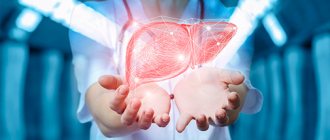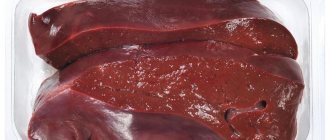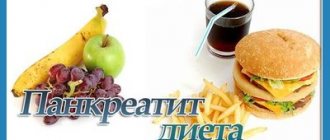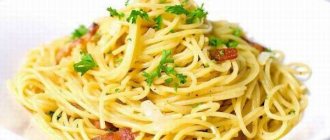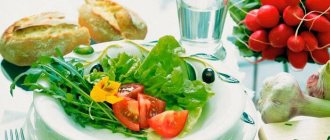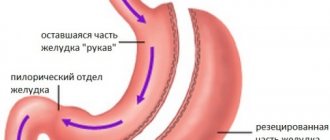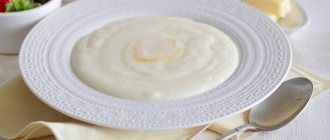With gastritis and pancreatitis, the mucous membrane of the stomach and pancreas becomes inflamed, respectively. Every year the number of diseases of the digestive tract is steadily growing and this largely depends on diet. It’s not for nothing that they say that we are what we eat. That’s right, the cells of our body are constantly renewed and our health directly depends on the products we consume.
Both gastritis and pancreatitis are serious illnesses in themselves, and if they occur in combination, then their negative impact on the body doubles. With gastritis, inflammation of the stomach walls occurs. There can be many reasons for this: stressful situations, bacterial infection, excessive secretion of hydrochloric acid, overeating, fasting, smoking, alcoholism.
Gastritis can be acute or chronic. During the period of exacerbation, patients begin to experience unpleasant symptoms: abdominal pain, nausea, vomiting, belching, flatulence. With pancreatitis, the mucous membrane of the pancreas suffers.
The disease manifests itself in the form of nausea, vomiting, heartburn, digestive disorders, and abdominal pain. The functioning of the organ is negatively affected by overeating, alcohol abuse, fatty, fried, spicy foods, and taking hormonal drugs.
All organs of the gastrointestinal tract are closely interconnected, therefore, when one organ becomes inflamed, the “domino principle” is triggered; this simply cannot but affect the work of nearby organs. Diet is an important component in the treatment of gastrointestinal diseases. A specialist will help you choose a diet, but only after an examination. So, what diet is prescribed for patients with digestive problems?
Why does the doctor prescribe a diet?
Pancreatitis involves the development of an inflammatory process in the pancreas, which is a consequence of the abuse of fatty and fried foods, carbonated and alcoholic drinks. The diet is prescribed by a doctor to reduce the load on the gland.
Pancreatitis is often accompanied by gastritis, which involves inflammation of the gastric mucosa. The result of this is a disruption in the production of hydrochloric acid, which affects the digestive processes. To reduce inflammation, you need to follow a diet that the doctor prescribes to the patient.
Diet is an important component of the treatment of gastritis and pancreatitis. To reduce the load on inflamed organs, a number of products are excluded from the menu.
Diets for chronic gastritis with increased, normal or decreased secretion of gastric juice
Chronic gastritis is a disease of the stomach accompanied by inflammation of its mucous membrane. Over time, chronic inflammation leads to disruption of the self-healing of the mucous membrane, to the death of stomach cells with secretory function or their replacement with intestinal cells. This process disrupts gastric motility and digestive function. Chronic gastritis can be asymptomatic or with periodic exacerbations.
According to modern recommendations, for chronic gastritis, outside of exacerbation, there is no need for a therapeutic diet. To prevent exacerbations, it is recommended to follow the principles of a healthy diet with an adequate supply of essential nutrients: proteins, fats, carbohydrates, minerals and vitamins. Regularity of eating is also important. Foods and drinks that cause increased secretion of gastric juice, as well as those that cause individual intolerance, are excluded.
General principles of a preventive diet:
- A balanced diet including healthy foods and sufficient fiber.
- Regular meals - 4 times or more a day, which contributes to the rhythmic activity of the gastrointestinal tract.
- Using boiling, baking or steaming to prepare dishes.
- Avoid spicy, fatty and fried foods.
- Limit consumption of simple carbohydrates and foods high in cholesterol.
Read more about the principles of healthy eating
In case of exacerbation of gastritis, drug therapy is first prescribed, including that directed against Helicobacter pylori infection.
A therapeutic diet can be an auxiliary remedy if you have started treatment and the effect of treatment has not yet occurred, and also if you have not yet had time to see a doctor during an exacerbation. In addition, a therapeutic diet for gastritis is recommended to prevent exacerbation while taking medications that negatively affect the gastric mucosa - anticoagulants, antihypertensive or anti-inflammatory drugs, as well as when your gastroenterologist is forced to reduce the amount of therapy or temporarily cancel it.
In case of exacerbation of chronic gastritis with increased or normal secretion of gastric juice, therapeutic diets are used that provide mechanical and chemical sparing of the gastric mucosa. In this capacity, diet No. 1 according to M. I. Pevzner or its new edition of 2003 “Basic version of the standard diet” (OVD) No. 1 remains relevant.
For patients with chronic gastritis with reduced secretion, diet No. 2 according to M. I. Pevzner or the new edition of the “Basic version of the standard diet” (OVD) No. 2 is recommended.
Basic Rules
For pancreatitis and gastritis, the basic rules for creating a diet are as follows:
- The diet should be five times a day: first and second breakfast, lunch, afternoon snack and dinner. Portion sizes are reduced.
- Eating dry food on the go is strictly not recommended.
- You should not eat in the last two hours before bedtime.
- Fried foods are excluded from the diet. It contains harmful components that have a detrimental effect on the pancreas.
What to give up
If diet recommendations are not followed, the effectiveness of treatment will be extremely low. Patients with gastritis and pancreatitis should avoid baking. Borscht and rassolniki, as well as fatty goose and duck meat, and pork are prohibited.
Many vegetables are prohibited, for example, cabbage, which tends to irritate the mucous membranes of organs, as well as radishes and cucumbers. Mushroom-based dishes are limited. Alcohol, soda and any cheese are prohibited.
You should not eat fresh and rye bread, strong tea and coffee, fatty broths, canned food, sausages, and fast food.
What foods can you eat?
All dishes that make up the menu are prepared using products that are easily processed by the gastrointestinal tract. These include the following:
- jelly from non-acidic fruits and berries;
- green and weak black tea, rosehip decoction without sugar;
- steamed chicken egg dishes;
- low-fat broths (based on meat, fish, vegetables);
- fruit and vegetable purees (fruits and vegetables must first be boiled);
- porridge;
- steamed cutlets.
Bread made from premium flour is allowed in moderation, but it is better to replace it with breadcrumbs. From time to time you can treat yourself to a biscuit, but it’s better to eat yesterday’s cake, slightly dried out. Milk is also acceptable in small quantities, but the best alternative is low-fat kefir.
Authorized Products
Diet for diseases of the stomach and pancreas includes:
- First courses cooked in vegetable broth. Most often these are cereal soups (semolina, buckwheat, oatmeal, rice) with the addition of pureed vegetables. To increase calorie content and improve taste, they are infused with an egg-milk mixture, a small amount of cream (if tolerated), minced meat and butter. For variety, you can prepare vegetable and cereal puree soups. If well tolerated, dill can be added to first courses.
- Lean meat products (beef, lean pork, chicken, turkey, rabbit) - steamed meatballs, cutlets, quenelles, souffles, zrazy, pates. Puree is prepared from boiled meat and poultry.
- Lean vegetables - potatoes, pumpkin, carrots, cauliflower, zucchini, green peas, and beets. At first, they are cooked boiled and pureed, adding butter. During the period of remission, you can eat raw vegetables: grated carrots with vegetable oil, grated pumpkin, tomatoes and cucumbers without skin.
- Dishes from low-fat fish - at first chopped (cutlets, meatballs, meatballs, zrazy), and later in pieces. The skin is removed and the food is steamed.
- Boiled porridge in water. Use cereals that do not contain a large amount of fiber - rice, buckwheat, semolina, oatmeal. Cereals can be used to make puddings by adding cottage cheese. If milk is well tolerated, porridge can be cooked with its addition.
- Dried white bread, dry biscuits and cookies.
- Non-acidic tasting fermented milk products with low fat content. Milk may be poorly tolerated in case of pancreatitis, so it is used only as an additive in sauces, omelettes, cereals and soups. The diet of patients includes not only cottage cheese, but also dishes with it - you can prepare cheesecakes and puddings, and you are also allowed to eat grated cheese.
- Soft-boiled eggs or in the form of an omelet (for pancreatitis, it is better to eat protein omelettes).
- Desserts made from mashed berries based on semolina. Sweet berries and fruits in thermally processed form (baked, pureed, jelly, compotes with pureed fruit, mousses, jellies).
- Dried fruits are consumed steamed and pureed. For dessert, you can allow protein meringues, marshmallows, marshmallows, jelly marmalade, a small amount of jam and honey. During remission, it is allowed to eat raw fruits and pureed berries.
- Diluted sweet fruit juices, weak tea, tea with milk, rosehip infusion, compotes from fresh and dried fruits. Carrot juice and dried fruit compotes are indicated for pancreatitis in the presence of potassium deficiency.
Table of permitted products
| Proteins, g | Fats, g | Carbohydrates, g | Calories, kcal | |
Vegetables and greens | ||||
| zucchini | 0,6 | 0,3 | 4,6 | 24 |
| broccoli | 3,0 | 0,4 | 5,2 | 28 |
| cauliflower | 2,5 | 0,3 | 5,4 | 30 |
| potato | 2,0 | 0,4 | 18,1 | 80 |
| carrot | 1,3 | 0,1 | 6,9 | 32 |
| beet | 1,5 | 0,1 | 8,8 | 40 |
| pumpkin | 1,3 | 0,3 | 7,7 | 28 |
Fruits | ||||
| apricots | 0,9 | 0,1 | 10,8 | 41 |
| bananas | 1,5 | 0,2 | 21,8 | 95 |
| nectarine | 0,9 | 0,2 | 11,8 | 48 |
| peaches | 0,9 | 0,1 | 11,3 | 46 |
| apples | 0,4 | 0,4 | 9,8 | 47 |
Berries | ||||
| strawberry | 0,8 | 0,4 | 7,5 | 41 |
| raspberries | 0,8 | 0,5 | 8,3 | 46 |
Nuts and dried fruits | ||||
| dried apricots | 5,2 | 0,3 | 51,0 | 215 |
| dried apricots | 5,0 | 0,4 | 50,6 | 213 |
| prunes | 2,3 | 0,7 | 57,5 | 231 |
Cereals and porridges | ||||
| buckwheat (kernel) | 12,6 | 3,3 | 62,1 | 313 |
| semolina | 10,3 | 1,0 | 73,3 | 328 |
| oat groats | 12,3 | 6,1 | 59,5 | 342 |
| cereals | 11,9 | 7,2 | 69,3 | 366 |
| white rice | 6,7 | 0,7 | 78,9 | 344 |
Flour and pasta | ||||
| noodles | 12,0 | 3,7 | 60,1 | 322 |
Bakery products | ||||
| white bread crackers | 11,2 | 1,4 | 72,2 | 331 |
| wheat bread | 8,1 | 1,0 | 48,8 | 242 |
Confectionery | ||||
| jam | 0,3 | 0,2 | 63,0 | 263 |
| jelly | 2,7 | 0,0 | 17,9 | 79 |
| marshmallows | 0,8 | 0,0 | 78,5 | 304 |
| paste | 0,5 | 0,0 | 80,8 | 310 |
| Maria cookies | 8,7 | 8,8 | 70,9 | 400 |
Raw materials and seasonings | ||||
| honey | 0,8 | 0,0 | 81,5 | 329 |
| sugar | 0,0 | 0,0 | 99,7 | 398 |
| milk sauce | 2,0 | 7,1 | 5,2 | 84 |
Dairy | ||||
| kefir | 3,4 | 2,0 | 4,7 | 51 |
| kefir 1.5% | 3,3 | 1,5 | 3,6 | 41 |
| sour cream | 2,8 | 20,0 | 3,2 | 206 |
| curdled milk 1% | 3,0 | 1,0 | 4,1 | 40 |
| acidophilus 1% | 3,0 | 1,0 | 4,0 | 40 |
Cheeses and cottage cheese | ||||
| cottage cheese | 17,2 | 5,0 | 1,8 | 121 |
| cottage cheese 1% | 16,3 | 1,0 | 1,3 | 79 |
| cottage cheese 1.8% (low-fat) | 18,0 | 1,8 | 3,3 | 101 |
Meat products | ||||
| boiled beef | 25,8 | 16,8 | 0,0 | 254 |
| boiled beef tongue | 23,9 | 15,0 | 0,0 | 231 |
| boiled veal | 30,7 | 0,9 | 0,0 | 131 |
| rabbit | 21,0 | 8,0 | 0,0 | 156 |
Bird | ||||
| boiled chicken | 25,2 | 7,4 | 0,0 | 170 |
| turkey | 19,2 | 0,7 | 0,0 | 84 |
Eggs | ||||
| chicken eggs | 12,7 | 10,9 | 0,7 | 157 |
| quail eggs | 11,9 | 13,1 | 0,6 | 168 |
Fish and seafood | ||||
| flounder | 16,5 | 1,8 | 0,0 | 83 |
| pollock | 15,9 | 0,9 | 0,0 | 72 |
| blue whiting | 16,1 | 0,9 | — | 72 |
| cod | 17,7 | 0,7 | — | 78 |
| hake | 16,6 | 2,2 | 0,0 | 86 |
| pike | 18,4 | 0,8 | — | 82 |
Oils and fats | ||||
| butter | 0,5 | 82,5 | 0,8 | 748 |
| sunflower oil | 0,0 | 99,9 | 0,0 | 899 |
| ghee | 0,2 | 99,0 | 0,0 | 892 |
Non-alcoholic drinks | ||||
| mineral water | 0,0 | 0,0 | 0,0 | — |
| coffee with milk and sugar | 0,7 | 1,0 | 11,2 | 58 |
| black tea with milk and sugar | 0,7 | 0,8 | 8,2 | 43 |
Juices and compotes | ||||
| apricot juice | 0,9 | 0,1 | 9,0 | 38 |
| carrot juice | 1,1 | 0,1 | 6,4 | 28 |
| peach juice | 0,9 | 0,1 | 9,5 | 40 |
| pumpkin juice | 0,0 | 0,0 | 9,0 | 38 |
| rose hip juice | 0,1 | 0,0 | 17,6 | 70 |
| * data is per 100 g of product | ||||
Sample menu for the week
Despite the fact that with gastritis and pancreatitis many foods need to be excluded, the menu can be quite tasty and varied. It must be drawn up by a doctor. Below is an example of a weekly diet.
Monday
- Breakfast: pilaf based on dried fruits;
- Second breakfast: biscuits and tea;
- Lunch: vegetable soup (with grated carrots and pumpkin), fish soufflé, currant broth;
- Afternoon snack: strawberries and low-fat milk;
- Dinner: eggplant and zucchini stew with boiled veal, a glass of compote.
Tuesday
- Breakfast: cheesecakes;
- Second breakfast: a couple of baked apples;
- Lunch: soup with chicken breast and noodles, baked zucchini, rosehip infusion;
- Afternoon snack: jelly;
- Dinner: baked fish, milk jelly.
Wednesday
Breakfast: buckwheat;
Dietary nutrition during such diseases involves the use of herbal infusions.- Second breakfast: cottage cheese with sour cream;
- Lunch: soup with rice based on vegetable broth, beef cutlet, tea;
- Afternoon snack: kefir;
- Dinner: chicken soufflé, jelly.
Thursday
- Breakfast: oatmeal;
- Second breakfast: soft-boiled egg;
- Lunch: vegetable puree soup, lean baked meat, a cup of tea;
- Dinner: boiled pollock, rosehip infusion.
Friday
- Breakfast: steamed omelette;
- Second breakfast: rosehip broth;
- Lunch: fish soup, beef dumplings with cottage cheese, tea;
- Afternoon snack: milkshake with strawberries;
- Dinner: pasta and broccoli casserole, jelly.
Saturday
- Breakfast: rice porridge with milk;
- Second breakfast: biscuits with tea;
- Lunch: vegetable soup, turkey chops, a small amount of marshmallows;
- Afternoon snack: beetroot and carrot puree with the addition of sea buckthorn;
- Dinner: steamed fish cutlets, currant broth.
Sunday
- Breakfast: poached egg;
- Second breakfast: pie with jam and tea;
- Lunch: vegetable soup, meat and egg roll, tea;
- Afternoon snack: smoothie with raisins and oatmeal;
- Dinner: boiled fish, rosehip broth.
Video on the topic: Nutrition for gastritis - basic rules of various forms.
Herbal decoctions for pancreatitis and gastritis
Various herbal decoctions, which have been used since ancient times, relieve inflammation and heal, so they can be used for gastritis and pancreatitis. Decoctions and teas are prepared from medicinal plants. Plants such as rose hips, plantain, yarrow, and St. John's wort have proven themselves well. It is better to use them diluted.
You should be wary of ready-made herbal teas sold in pharmacies. They may contain seasonings that are undesirable in inflammatory processes. Also keep in mind that any medicinal plant can provoke an allergic reaction.
Features and principles of dietary nutrition
It is important to understand that dietary nutrition is not just about consuming approved foods and eliminating junk foods. A patient with pancreatitis or gastritis should consume healthy foods properly.
In order for the diet to be beneficial and the functioning of the digestive system to improve, it is necessary to follow a number of simple rules.
- Proper cooking. For pancreatitis and gastritis, you should avoid fried foods. Only stewed or boiled foods are allowed (baked foods are sometimes allowed).
- Temperature conditions. Very hot or cold foods can adversely affect the affected stomach. Each dish should be moderately warm.
- Product processing. All products must undergo thorough heat treatment. In addition, food should be consumed in crushed form (for example, fruits should be cut into small slices).
- Less, but more often. If a person has problems with the digestive system, it is very important to pay close attention to portion sizes. They shouldn't be too big. With pancreatitis and gastritis, overeating is generally unacceptable. It is best to divide the daily diet into 5-6 small portions.
- Rejection of bad habits. The body, which is actively fighting pancreatitis and gastritis, is weakened, so you should not expose it to additional stress. During the treatment phase, it is recommended to avoid smoking and drinking alcohol.
- You should avoid raw vegetables and fruits as they can cause diarrhea.
Enzymes
Enzymes help the digestive organs cope with their direct functions. Gastritis and pancreatitis are precisely the reason for their lack. Special medications, the choice of which in pharmacies is extremely wide, can fill the gap. A popular medicinal enzyme is pancreatin. It is part of such drugs as Mezim, Festal and Creon.
Pancreatin components stimulate the production of pancreatic and intestinal enzymes that break down food at various stages of digestion.
Diet "Table No. 5"
The most effective and safe for a weakened body is the nutritional scheme developed by Pevzner. The basis of this diet is to minimize fiber-rich foods of plant and animal origin, completely remove fried and smoked foods, and reduce various food additives.
Following the “Table No5” diet is not just a whim of people who want to lead a healthy lifestyle. The menu was developed by a qualified nutritionist who carefully selected all dishes that are prepared from safe food combinations.
Gastroenterologists claim that such a diet is very effective and really helps improve the patient’s condition.
Menu for the week
| Breakfast | Snack | Dinner | Afternoon snack | Dinner | |
| 1 day | Steamed omelette, dried piece of bread and tea. | Rusks, tea. | Buckwheat porridge with boiled pumpkin, compote. | Kissel, baked apple. | Oatmeal and 100 g of turnip salad (without oil), tea. |
| Day 2 | Cottage cheese with low fat content - 3-7%, a piece of dried bread, compote. | Baked apple. | Brisket with steamed vegetables, vegetable soup, jelly. | Yogurt, crackers. | Buckwheat porridge with stewed vegetables, boiled fish, jelly. |
| Day 3 | Low fat yogurt, jelly. | Apple souffle. | Rice, stewed fish, vegetable soup, tea. | Low fat cottage cheese or yogurt. | Steamed omelette, stewed chicken breast, rosehip broth. |
| 4 day | Low-fat cottage cheese, jelly. | Baked apple. | Vegetable puree, chicken breast, dried piece of bread, compote. | Oatmeal (you can add berries), tea. | Steamed vegetables and fish, herbal decoction. |
| 5 day | Oatmeal, tea. | Crackers, compote. | Stew, vegetable soup, rice, compote. | Rusks, cottage cheese. | Buckwheat with vegetables, cottage cheese, tea. |
| Day 6 | Steamed omelette, yogurt. | 1-2 baked apples. | Steamed vegetables and fish, jelly. | Crackers, rosehip infusion. | Rice with vegetables, stewed chicken breast, jelly. |
| Day 7 | Low-fat cottage cheese, tea. | Rusks, compote. | Stewed potatoes, rabbit meat, vegetables, tea. | Baked apple. | Oatmeal with water, jelly, cottage cheese. |
Features of the diet during exacerbation
When pathologies worsen, the menu is slightly adjusted. One day a week should be devoted to therapeutic fasting. The next day, it is recommended to have a light breakfast, for example, oatmeal with water. Then you can eat as usual.
Complications possible if the diet is not followed
Proper nutrition for gastritis and pancreatitis helps normalize digestive processes and promote healing. If you do not follow the recommendations of a specialist and regularly violate the proposed menu, then there is a risk of pathologies becoming chronic or even oncological. The sooner you start treating diseases, the better - this way you can avoid many negative consequences.
Diet in case of exacerbation of diseases
During an exacerbation of the disease, therapeutic hunger will help. During the first three days, the patient is allowed to drink only still water; on the fourth day, you can add green tea, rosehip decoction, and light porridge with skim milk. Over the next three days, you can dilute the diet with vegetable stew and cottage cheese. Then it is allowed to gradually introduce dishes that are prepared from permitted products.
In the early stages of an exacerbation, it is extremely important to maintain bed rest and, if necessary, apply a heating pad to the abdomen in the stomach area.
General tips for organizing nutrition for pancreatitis and gastritis
Pathologies are not only acute and chronic. There is gastritis with high and low stomach acidity, and this will also affect nutrition. With high acidity, you need food that improves the production of gastric juice. At low levels, you need to avoid those products that can further damage the irritated mucous membrane. The main goal of a therapeutic diet is to give the stomach and pancreas maximum rest.
There are also the following rules for creating a diet:
In the case of gastritis with high acidity, eating any raw vegetables is prohibited! You need to eat in small portions.- Food can be steamed, stewed and boiled. Frying is excluded.
- Food should be moderately warm, never cold or hot.
- During an attack of gastritis, food should be pureed.
- You need to eat slowly, chewing your food thoroughly.
- It is recommended to eat at the same time every day.
Rules of therapeutic fasting
Fasting is an effective method for treating diseases of the digestive system, including the stomach and pancreas. A short but complete refusal of food will allow you to provide rest to the inflamed organ and quickly restore its functional activity.
In order to understand the mechanism of action of hunger on a diseased organ, it is important to understand the pathogenesis of the disease, that is, the stages of its development. Normally, when eating food, the pancreas produces digestive enzymes that break down the food eaten.
During an inflammatory reaction, the pancreatic ducts become blocked and, in fact, the organ begins to digest its own tissues. Abstaining from food eliminates the need for the synthesis of digestive enzymes. The pancreas is in rest mode and therefore regenerative processes begin to activate in it. In the acute period of pancreatitis and gastritis, therapeutic hunger is indicated.
Important! Therapeutic hunger eliminates pain in a short period of time.
After refusing food, a strict diet is prescribed. It is important to end the hunger strike gradually, otherwise you can seriously harm yourself. In some cases, abstaining from food altogether eliminated the need for drug therapy. First of all, you should make sure that there are no contraindications to the procedure.
It is not recommended to refuse food if you have hypotension, low glucose levels, or during pregnancy. Dry fasting, which does not involve drinking liquid, will help stop the acute period. Drinking natural water is allowed only in exceptional cases. Rosehip decoction, as well as alkaline water without gas, are allowed as a drink. During dry fasting, IV drips are prescribed to maintain the body's strength.
The duration of the procedure is determined by the doctor depending on the characteristics of the disease. As a rule, abstinence from food lasts one to two days. Don't forget about the importance of bed rest. Thus, the body will have less energy expenditure and the inflamed organ will recover faster.
Nutrition for combined pancreatitis with gastritis or cholecystitis
If the underlying disease is accompanied by the development of cholecystitis, then the menu is allowed to include:
- slimy soups made from rice, oatmeal or semolina;
- pureed porridge cooked in water; adding milk and butter is strictly prohibited;
- vegetable juices, compotes;
- homemade white bread croutons;
- pureed boiled meat, fish;
- low-fat cottage cheese.
With a combined course of pancreatitis and gastritis, the menu should include pureed soups from oatmeal, rice and semolina, to which you can add egg yolk and a little butter, pureed vegetables - potatoes, carrots, beets - with the addition of milk or cream, steam soufflés, cutlets and dumplings made from minced meat and fish.
The strict option is recommended only during the acute period of the disease. After the condition has stabilized, the person switches to the diet recommended for chronic pancreatitis.
Medicines come to the rescue
Of course, diet for gastritis and pancreatitis plays a major role in normalizing the functioning of the gastrointestinal tract and the patient’s health. However, the best effect will be achieved if the patient combines it with medications that facilitate digestion and eliminate discomfort.
| Group of drugs | Function | Names of means for example |
| Antidiarrheal | Medicines in this group affect intestinal motility, chemistry and microbial composition of intestinal contents. Relieves diarrhea. | "Smecta", "Almagel", "Polifepan", "Imodium" |
| Antiemetics | Helps get rid of nausea and vomiting. | "Motilium" |
| Anti-inflammatory | Eliminate inflammation. | "Iberogast" |
| Carminative | The drugs help remove gases from the intestines. | "Espumizan" |
| Prokinetics | Stimulates gastrointestinal motility (action close to laxatives). | "Cerukal", "Ganaton", "Motilak" |
| Antispasmodics | Antispasmodics in gastroenterology are used to reduce pain caused by spasms of the muscles of the digestive organs. | "Nitroglycerin", "No-Shpa", "Papaverine" |
| Analgesics | The essence of the action of drugs with an analgesic effect is that they relax the pancreatic sphincter, due to which the accumulated enzyme in the organ is released and the intensity of pain decreases. Such tablets should not be taken for a long period. | "Analgin", "Baralgin" |
| Enzymatic | Enzymes are a group of medications that are basic in the treatment of pancreatitis and gastritis. They help normalize the functioning of the gastrointestinal tract. Only a doctor prescribes medications; independent use can harm the organs of the gastrointestinal tract and significantly aggravate the intensity of the symptomatic picture. | "Mezim", "Digestal" |
| Antimicrobial | They have an antitoxic effect during exacerbation of diseases. | "Furazolidone", "Sulgin" |
| Antibiotics | Antibiotics are drugs for emergency relief of symptomatic symptoms, therefore they are administered intravenously. After the attack is relieved, they are prescribed in tablet form. | "Ampicillin", "Pilobact-Neo" |
| Antihistamines | Antihistamines (H2 blockers) are prescribed to inhibit the production of gastric juice. The course of treatment is short. At the beginning of treatment, the patient is prescribed the maximum dosage allowed for each clinical case. | "Aleron", "Fenkarol" |
| Psychopharmacological, sedatives | They have a calming effect. | "Amitriptyline", "Sanason", valerian extract |
All patients are also required to be prescribed vitamin complexes. The emphasis is on vitamins of groups A, B, K, E, which help restore insufficient concentrations of nutrients in the body and help normalize the process of digestion and the outflow of bile.
Most often, patients suffering from gastritis and pancreatitis are prescribed the drug "Pancreatin", which contains natural pancreatic enzymes: amylase, protease and lipase. This medicine promotes the natural process of digestion, relieves heaviness in the stomach and nausea.
